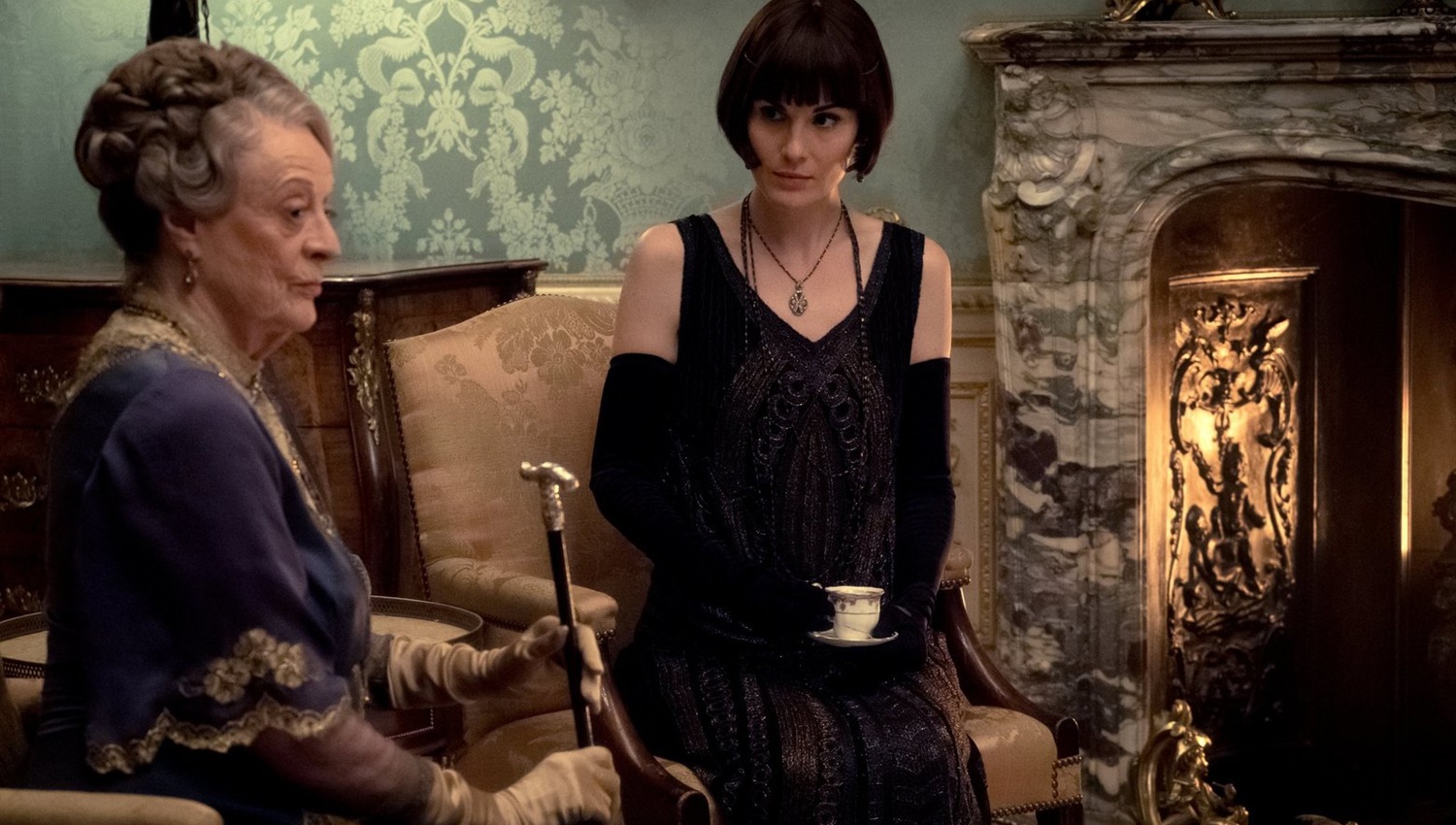
Downton Abbey
Dustin Chase
Television shows adapted into big screen events are rare and difficult to pull off. The X-Files did it, once while the show was still on air, and a revival after the series ended. The wildly popular Downton Abbey has been off the air four years, this film takes place in 1927 just where near where the finale concluded. Michael Engler makes his feature film directorial debut as one of Abbey’s lead directors. To his credit, it’s a seamless transition, never feeling like television thrown onto the big screen. A bigger budget and a story arc that has to be completed in 120 minutes allows for more grandeur. Highclere Castle, the real name for the Downton Abbey exterior location, gets almost as much screen time as some of the minor characters. Swooping wide shots, over head drone cinematography, fans of the show get a much different perspective.
The King (Simon Jones) and Queen (Geraldine James) are coming to Downton Abbey as part of their tour of Yorkshire and the Crawley family is in a tizzy. No one is as excited as the staff as they prepare to serve royalty. When the royal instructions arrive from Buckingham Palace, it seems the crown will be taking over all service duties and the Abbey crew pushed aside. While a hostile takeover is planned down below, there is other drama brewing in the main house. Violet Crawley (Smith) has a bone to pick with the Queens handmaiden Maud Bagshaw (Staunton), also her cousin. The entire family is concerned about what their loose-tongued grandmother has planned. Downton Abbey’s reputation all depends on this one night, so even retired butler Mr. Carson (Jim Carter) is brought in to ensure everything runs smoothly.
Downton Abbey likely won’t register when it comes to end of year lists or awards, as it’s theme of giving context to various classes of people is less than inventive narratively. Flashier films like Knives Out or the visionary Parasite, dig far deeper into similar themes but with more creativity and cinematic orchestration.
It’s a Harry Potter reunion as Staunton (Dolores Umbridge) and Smith (Minerva McGonagall) feud again on screen as one of the films highlights. Staunton is one of the many feature film additions that blend the old with the new. That is really the measured success of Downton Abbey, giving the faithful television viewers an extension to the characters they watched for years, balanced as a movie that works on its own. Oscar nominated writer Julian Fellows is a master of creating drama where there isn’t any. Yet don’t expect Downton Abbey to fare like Fellows best picture nominated Gosford Park. Constructing a screenplay that finds new territory for prevailing characters is the real win.
Downton Abbey likely won’t register when it comes to end of year lists or awards, as it’s theme of giving context to various classes of people is less than inventive narratively. Flashier films like Knives Out or the visionary Parasite, dig far deeper into similar themes but with more creativity and cinematic orchestration. Understanding the core audience, Fellows does lean slightly into more edgy material with Thomas Barrow’s character played by Collier. Anticipating success, Fellow’s script also prepares for sequels, setting up narratives and preparing for changes to the household. You don’t need to do any reading or research of the show to understand the characters motives, or background, those allusions are provided in context. While the film could have cut about 15 minutes away by concluding after royalty leaves the house, the editing keeps the audience from feeling like they have overstayed.
Final Thought
The achievement here is balancing a story for the fan of the show and entertaining those who have never seen a single episode.
